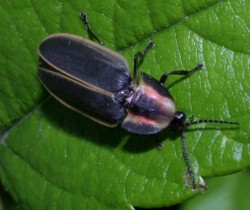By Lisa Gardiner, Jun 30, 2011
It is becoming more apparent that people of all ages want to learn more than just the facts about climate change—they want to know what they can DO to address this problem.
The Sciencenter in Ithaca, New York has been working on projects that go beyond learning the facts about climate change, empowering children to use science to shape a better future. Sure, we still encourage kids to save energy by turning the lights off and riding their bikes whenever possible, but a recent collaboration with the Cornell Lab of Ornithology (CLO) has allowed us to start exploring citizen science as an avenue of climate change education.
Three years ago we embarked on a project to engage middle school students in CLO’s NestWatch program, which contributes to our understanding of how climate change affects nesting birds. Studies have already shown that some bird species are nesting earlier in the year, which impacts important timing considerations such as food availability. With funding from the National Science Foundation, great support from scientists at CLO, and a group of middle school volunteers we began using citizen science to explore the link between climate change and nesting birds.
… Read more
Categories: Animals, Birds, Citizen Science, Climate & Weather, Nature & Outdoors, Science Education Standards










